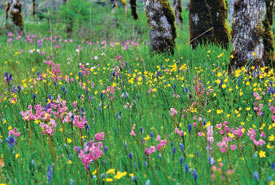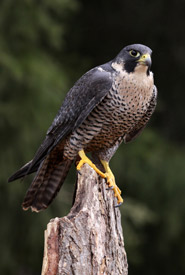The 21st century field naturalist

Cowichan Garry Oak Preserve,BC (Photo by Tim Ennis/NCC)
Today’s birder or wildflower enthusiast would be almost unrecognizable to Canada’s first field naturalists. Percy Taverner (1875-1947), a Canadian pioneer in ornithology, carried a shotgun to identify birds in the hand, and used collections of preserved skins to verify species. Catherine Parr Traill (1802-1899), one of Canada’s earliest botanists, had her specimens painted by her niece to help document the prairie wildflowers of the Rice Lake Plains.
Twenty-first century naturalists, with smart phones, GPSs and mobile internet access, come equipped with more computing power than the Apollo space mission and more information than a 19th-century natural history museum.
Although technology certainly has the ability to separate us from the natural world, it can also help improve our shared understanding of nature and conservation. Website resources such as the Nature Conservancy of Canada's (NCC’s) featured species gallery provide a great reference tool for learning about wildlife. ExploreEcoNB connects people with nature in New Brunswick by showing parks and protected areas that you can explore.

Peregrine falcon (Photo by Chris Hill)
Perhaps most importantly, technology allows us all to become active participants in conservation, including you! Through online databases you can share information on NCC properties and other important conservation lands so that we can better understand and manage these places.
Here are a few example of how you can collect information that will help NCC and other conservation groups:
- Share your bird and butterfly observations with Ebird and Ebutterfly.
- Provide observations of rare species to your provincial conservation data centres or atlas projects.
- Be on the watch for invasive species and report your sightings through the Invasive Species Early Detection and Mapping System.
- Map NCC trails on which you through EveryTrail or AllTrails
- Share your images of NCC properties on Flickr and other photo sharing sites.
Although Taverner and Traill might not recognize today’s field naturalists, we still have a lot in common. Thanks to new technology, the modern naturalist can also make important contributions to our understanding and conservation of Canada and share their passion for nature with others.


